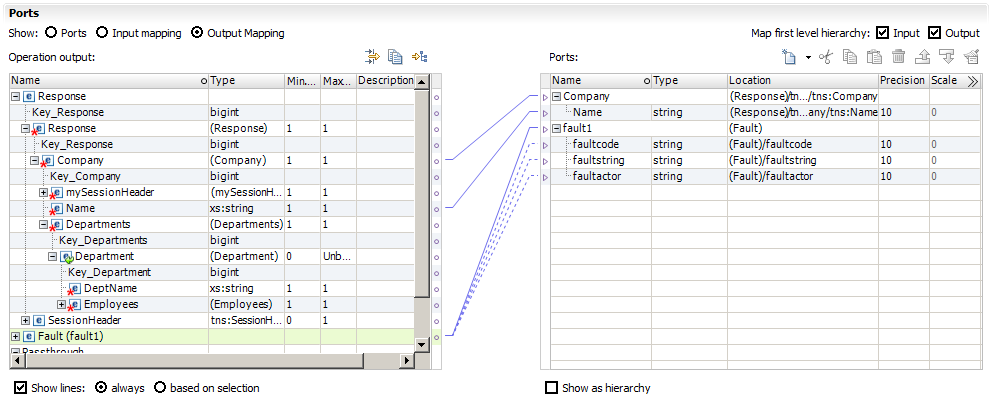Transformation User Interface
The Web Service Consumer transformation and the web services Input transformation provide a user interface that you can use to map data from the SOAP message to the transformation output ports.
The following figure shows a mapping between SOAP 1.1 message nodes and output ports in a Web Service Consumer transformation:
Operation Area
The Operation area contains the SOAP message hierarchy. Complex nodes or multiple-occurring nodes define hierarchy levels in the structure. The Developer tool adds keys to the levels that define the parent-child relationships between them.
In the preceding figure, the SOAP message hierarchy has the following levels:
- Response or Request
- Level that represents the root of the response or request message.
- Company
- Top level of the request data.
- Departments
- Multiple-occurring departments within the company.
- Employees
- Employee is a complex element within a department.
- Fault Group
- Fault message group that receives error messages.
Ports Area
You can map data from levels of the SOAP message to output ports. Each group of output ports can be related to other output groups with primary foreign-key relationships.
In the preceding figure, the transformation has groups of output ports that correspond to the groups of nodes in the SOAP message.

